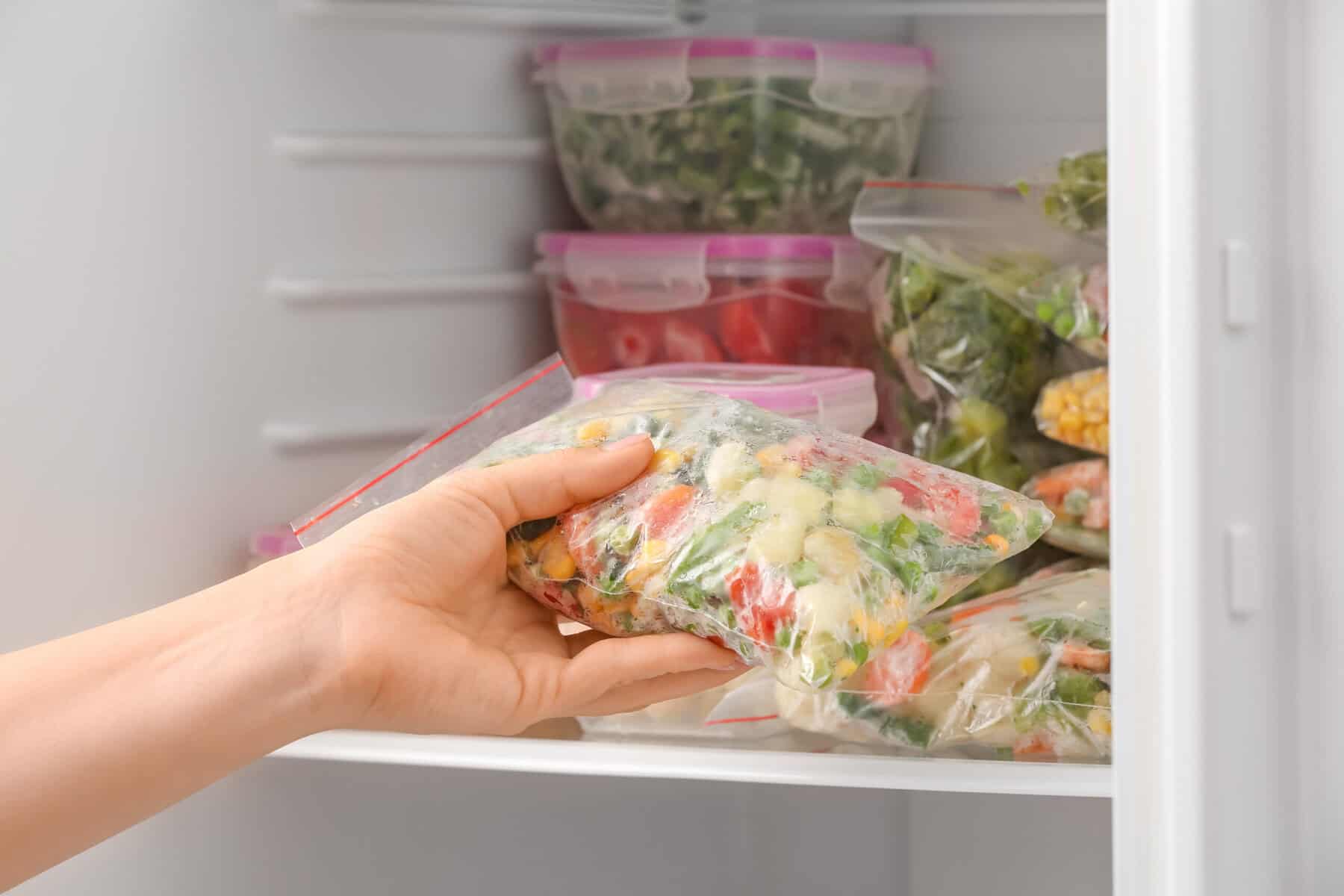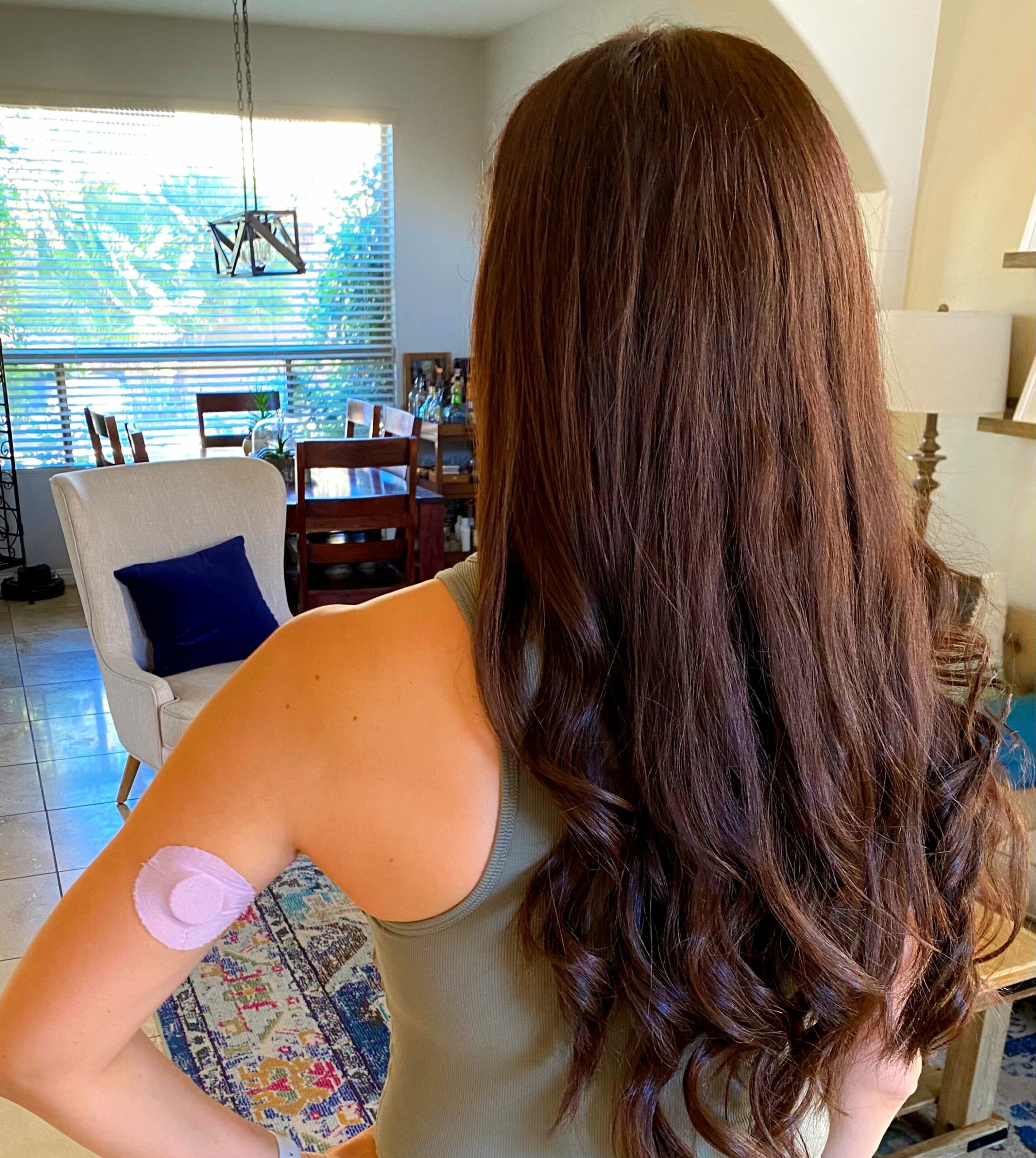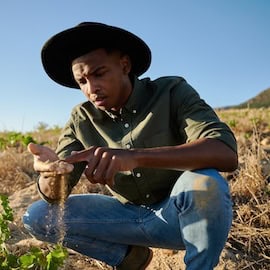Eating healthy is by no means an easy feat, but it is completely possible with a little bit of know-how and effort. One issue that often arises for people who are starting to eat more whole foods is produce going bad. After a few days, or even a few hours for some grocery items, your food might spoil.
So, how do you fix this? Fruits and vegetables are proven to be good sources of energy, nutrients, dietary fiber, vitamins, and minerals (1). Produce is essential for a healthy diet—and in order to eat it, you need to know what to do with it to keep it fresh. Here’s how to make produce last longer.
Where Should I Store My Produce?
The main issue when it comes to keeping produce fresh is where you choose to store it: refrigerator, countertop, or elsewhere. Location can truly make all the difference when it comes to how long your food lasts.
Foods that should be stored on your countertop are those that still need to ripen. Certain produce (usually fruits) may be purchased before they’re ripe, so you’ll want to put them on your countertop until they’re ready to be eaten. From then on, it’s a good idea to eat them immediately, or store them in the refrigerator for a couple more days. Examples of some produce that you may want to leave out of the refrigerator are (2):
- Tomatoes
- Avocados
- Bananas
- Pears
There are also certain vegetables that you should store in a cool, dry space such as a pantry—these include (2):
- Onions
- Garlic
- Potatoes
- Winter squash
These types of produce cannot be stored in the refrigerator because when exposed to moisture, their texture and flavor can change for the worse.
Any other produce should be put in your refrigerator. This especially includes fruits and vegetables that are already ripe or cut up into pieces.
Don’t Store These Foods Together
Ethylene is a gas released by most fruits and vegetables that causes produce to ripen (3).
“The more ripe an ethylene-producing fruit or vegetable is, the more gas it produces. So if other produce items are nearby, the gas will lead them to ripen more quickly as well,” says MyFitnessPal dietitian Katherine Basbaum.
Most tree fruits put out large amounts of ethylene, among a host of other produce. Here are some ethylene-producing fruits and vegetables (3):
- Apples
- Pears
- Apricots
- Avocados
- Cantaloupe
- Nectarines
- Papayas
- Peaches
- Bananas (when fully ripe)
- Peppers (when fully ripe)
- Tomatoes (when fully ripe)
The above produce items should not be stored with fruits and vegetables that are sensitive to ethylene, which include (3):
- Carrots
- Parsnips
- Broccoli
- Cucumbers
- Asparagus
- Iceberg lettuce
- Squash
- Herbs
- Apples
Lower temperatures help reduce sensitivity to ethylene (3). You’ll want to store these ethylene-sensitive foods in the refrigerator, in a crisper drawer. Ethylene-producing fruits and vegetables should be bagged and stored in a different crisper drawer.
About the Expert
Katherine Basbaum, MS, RD is Food Data Curator at MyFitnessPal. She received her Masters in Nutrition Communication from the Friedman School of Nutrition Science & Policy at Tufts University and completed her Dietetic Internship at UVA Health, where she also works as a nutrition counselor for cardiology patients.
4 Tips to Make Produce Last Longer
Now that we’ve covered where to put certain produce and what types of produce to not store together, let’s dive into more specific tips and tricks on how to make produce last longer.
#1: Remove Tops Off Root Veggies
Root vegetables like carrots, beets, and radishes all have leafy tops that tend to rot quickly, so if you are not planning on eating the leafy tops, it’s a good idea to cut them off immediately after purchasing (4). Go ahead and store the destemmed root vegetables in the refrigerator after that.
#2: Use Your Crisper Drawer
Don’t put produce on refrigerator shelves—crisper drawers are there for a reason! Putting produce in crisper drawers helps protect it and keep moisture in for longer (5). This ultimately maintains freshness for longer periods of time. Make sure that when you use crisper drawers, though, you should separate fruits from vegetables, as well as ethylene-producing items from ethylene-sensitive items.
#3: Keep Fresh Herbs Upright
If you buy fresh herbs, don’t leave them in the produce bag that you bought it in. Instead, treat the herbs like flowers: snip off a bit of the ends and put them in a mug, then cover them with a produce bag (5). This will keep the herb stalks alive, so that you have the freshest ingredients to use.
#4: Wash Leafy Greens
Basbaum recommends rinsing leafy greens under cool water, patting them dry with a paper or dish towel, wrapping them in a clean towel to absorb excess water, and storing them in a sealed container (6). This leads to optimal freshness for the leafy greens—perfect for salads, stirfrys, and anything else.
Frequently Asked Questions (FAQs): How to Make Produce Last Longer
How should I store cut fruits and vegetables?
It’s best to store pre-cut or packaged produce in the refrigerator (7). This also applies to fruits and vegetables that you may have cut yourself.
Should I wash my produce before storing it?
Aside from leafy greens, most produce items will stay fresh for longer if they are stored unrinsed (4). It’s probably best to wash your produce right before using it.
What produce usually goes bad faster?
“Soft fruits (like berries) as well as fresh leafy vegetables tend to spoil more quickly than other heartier fruits and vegetables,” says Basbaum (8). You might want to eat these produce items within days of purchase.
What types of containers are best for preserving freshness?
“Containers made of glass, stainless steel and ceramic are good choices for storing produce as these materials are non-reactive and non-toxic, can be easily sanitized, and keep food fresh,” says Basbaum (9). Plastic containers are also alright, but Basbaum recommends checking that they are dishwasher safe and BPA-free.
The Bottom Line
With so many types of produce and different storage methods, it can feel overwhelming to consistently eat fresh, whole foods without waste. But learning how to store your fruits and vegetables properly doesn’t have to be complicated.
Start small: choose a few produce items you buy often and apply the tips outlined above. Over time, you’ll get more comfortable with which foods need to be refrigerated, which ones are better off on the counter, and how to keep ethylene-sensitive items fresh for longer.
Ultimately, making produce last longer isn’t just about preventing food waste—it’s about getting the most nutritional value from your food and making healthy eating more convenient and sustainable. A little planning and care can go a long way in helping you stick to your health goals while saving money and time in the kitchen
Publisher: Source link





